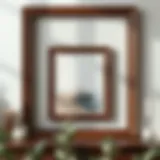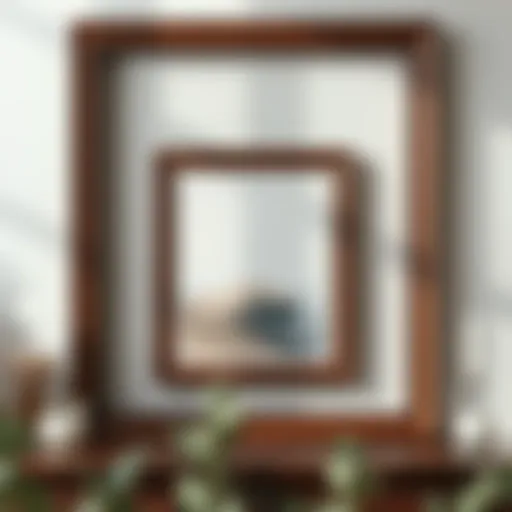Exploring Deep Cabinet Designs for Modern Interiors
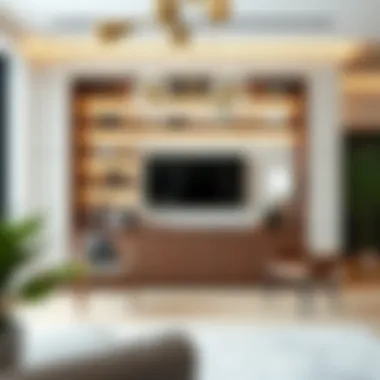
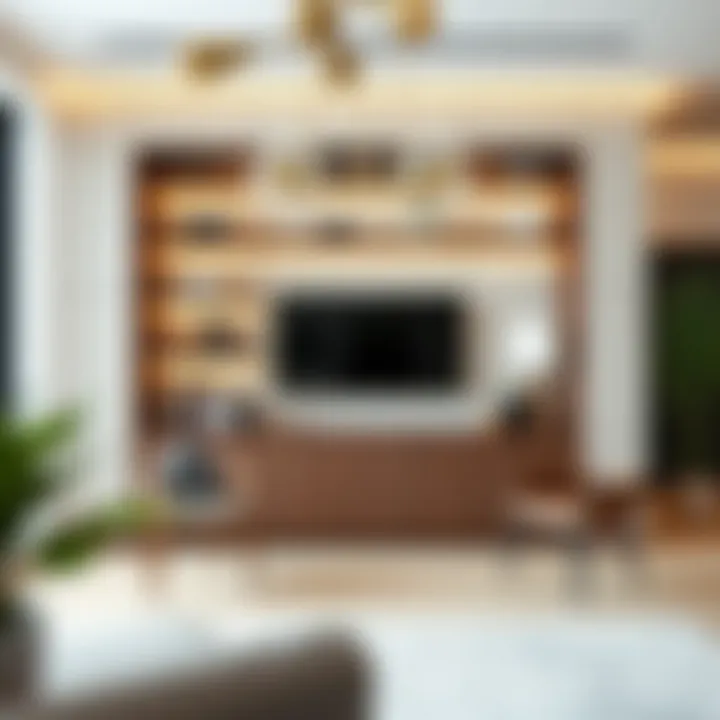
Intro
When considering how to optimize living spaces, deep cabinets have emerged as a noteworthy trend in furniture design. Their enhanced storage capabilities combined with stylish appeal make them increasingly popular among homeowners, designers, and DIY enthusiasts alike. This article offers a deep dive into the various facets of deep cabinet designs, focusing on their aesthetic values, functional benefits, and the materials that contribute to their modern allure.
As we explore this subject further, you will gain insights that not only broaden your understanding of these remarkable pieces of furniture but also enhance your ability to make informed decisions for your home or projects. From contemporary styles to practical considerations during the purchase phase, this guide seeks to paint a clear picture of how deep cabinets can serve both form and function effectively.
By harnessing the right design elements and carefully selecting optimal materials, you have the potential to elevate interior spaces while maximizing their utility.
Let's embark on this journey exploring the remarkable versatility and elegance these cabinets can bring to modern interiors.
Furniture Design Trends
Current Styles and Aesthetics
The design landscape for deep cabinets is constantly evolving, reflecting broader trends in home decor. Today’s deep cabinets are characterized by sleek lines and minimalistic designs, often merging seamlessly with other elements in the room. A key style that’s gaining traction is the open shelving concept, which emphasizes materials and craftsmanship alongside functionality. This trend offers a refreshing twist where the cabinets not only serve a purpose but also become a part of the artwork in the room.
Additionally, mid-century modern influences remain strong, with their clean silhouettes and combination of wood and metal. Deep cabinets crafted from rich walnut or ash, accented with brushed brass hardware, can transform any space, creating a blend of warmth and contemporary flair.
Color Palettes and Materials
The color choices for deep cabinets are often guided by personal preference but recent trends lean toward neutral tones with the occasional bold splash for accent. Shades like soft greys, whites, and muted blues establish a calm backdrop that allows the functional aspects of the cabinets to take center stage.
In terms of materials, natural wood finishes are highly sought after for their aesthetic appeal and durability. Meanwhile, options like laminate and MDF provide budget-friendly solutions without compromising on style. The right material can enhance not just the appearance but also the lifespan of these cabinets, making them wise choices for long-term investment.
"Deep cabinets are not just furniture; they are a statement about the owner's taste and attention to detail."
Buying Guides
Essential Considerations When Purchasing
When it comes to acquiring deep cabinets, there are several critical factors to keep in mind. First, measuring the intended space is essential to avoid any regret. Ensure you account for the depth not just in terms of usability but also how it fits with other furniture in the room.
Next, assess what you'll be storing. Will it be just seasonal decor, or kitchenware, or maybe an entire library of books? Understanding your storage needs can inform the type and design of deep cabinets that will work best for you.
Lastly, consider the quality of construction. Look for cabinets built with strong joints and high-grade materials—this ensures longevity and stability.
Top Recommendations for Different Budgets
Depending on your financial plan, options vary:
- Budget-Friendly Options: IKEA offers numerous deep cabinet designs that are customizable and affordable. Their modular components allow for creative combinations without breaking the bank.
- Mid-Range Choices: West Elm features stylish deep cabinets that balance design and functionality, with various finishes to fit any decor.
- Luxury Selections: If you're looking for something top-tier, Restoration Hardware provides exquisite cabinetry that combines traditional craftsmanship with modern design.
Prolusion to Deep Cabinets
The concept of deep cabinets extends beyond mere functionality; it becomes a cornerstone for both storage and aesthetic appeal in various interiors. As urban living spaces shrink, maximizing every square foot has never been more critical. Deep cabinets serve a dual purpose: they offer ample storage while contributing to the overall design scheme of a home. In this section, we will delve into the essence of deep cabinets, exploring their definitions, unique characteristics, and how they have evolved over time.
Definition and Characteristics
Deep cabinets are defined primarily by their depth, typically exceeding normal cabinet dimensions. This extra space allows for storing larger items or a greater number of goods, catering to varied storage needs. They can range from kitchen hues, where you can easily stash pots and pans, to living room units ideal for housing books or electronics.
Some key characteristics of deep cabinets include:
- Increased Storage Capacity: Their depth allows you to store more than conventional cabinets, making them beneficial for households with a variety of needs.
- Design Flexibility: They are adaptable to different spaces — be it a cozy kitchen or a stylish living room.
- Ergonomics: Many designs incorporate user-friendly features like pull-out shelves, which enhance accessibility and organization.
While deep cabinets add to practical storage solutions, they also enhance the visual appeal of a space when thoughtfully designed.
Historical Context
Historically, cabinets evolved from basic storage units to intricate furniture pieces that resonate with personal style. In ancient times, cabinets were quite different from today’s forms; they functioned as status symbols often adorned with elaborate carvings and locks. However, with industrial advancements, more materials became accessible, allowing for versatility in design.
In the 20th century, the trend shifted towards functionality, and cabinets began to assume more specialized roles in people's lives. This was particularly evident during the post-war boom, where quick construction methods and modern materials led to an upsurge of deep cabinets in homes. They became the go-to choice not just for kitchens but also for living and office spaces.
"The evolution of cabinets reflects broader societal changes, combining utility with artistry in our daily surroundings."
Today's designs still maintain this marriage of aesthetic and practicality, adapting to contemporary styles while focusing on maximizing space. Whether in urban apartments or spacious family homes, deep cabinets have firmly established their place in modern design narratives. With their storied past and essential role in today's interiors, it’s clear that understanding deep cabinets paves the way for better home design decisions.
Design Considerations for Deep Cabinets
When delving into the topic of deep cabinet designs, it is crucial to focus on a few foundational aspects that shape their utility and aesthetic appeal. The design considerations can significantly influence how these cabinets fit within the larger scheme of an interior space. Proportion, scale, styles, and aesthetics are not mere decorative elements; they help to ensure that the deep cabinets serve their intended purpose efficiently while contributing to the overall interior design.
Proportion and Scale
Understanding proportion and scale is no small feat in the realm of deep cabinets. These two concepts work hand in hand to create harmony within a space. Proportion refers to the relationship between the cabinet’s size and the size of the room or adjoining furniture. A cabinet too large can overpower a room, while one too small may get lost in the background. Achieving the right balance is essential; for instance, a kitchen outfitted with sprawling countertops will likely benefit from a deeper cabinet style, providing ample storage that marries function and form.
Scale, on the other hand, deals with the physical dimensions of the cabinetry in relation to the human body. Cabinets must be at a height and depth that allows easy access to items, ensuring that even the tallest or the shortest among us can make efficient use of the space. When these elements are considered carefully, deep cabinets can enhance the flow of a room rather than disrupt it, going a long way in fostering a harmonious environment.
Styles and Aesthetics
Modern
The modern style is often characterized by clean lines and minimal ornamentation. Its contribution to deep cabinet design lies in its emphasis on functionality and simplicity. This style typically features sleek finishes and sleek profiles, allowing the cabinets to blend seamlessly into contemporary interiors. One key characteristic of modern cabinets is the use of high-quality materials like plywood or stainless steel, which not only adds durability but also imbues a sense of sophistication.
The benefits of modern designs include their versatile nature, as they can fit various spaces from kitchens to offices. Their minimalist aesthetic can make small areas seem larger by drawing the eye without overwhelming. However, a common disadvantage may arise when it comes to customization; the stark simplicity can make it challenging for homeowners looking to inject a bit of personal flair.
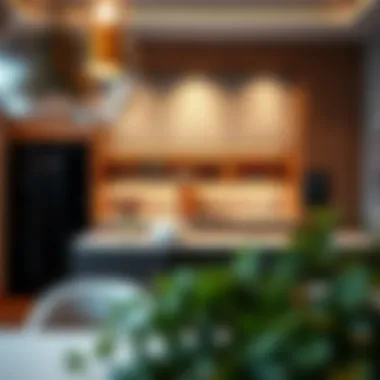
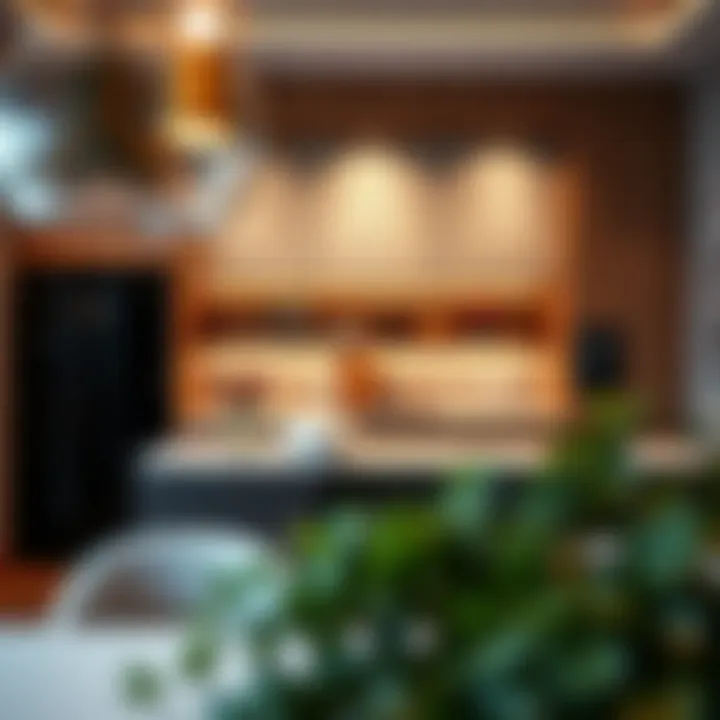
Traditional
Turning to traditional style, we see a rich tapestry of craftsmanship that often defines this aesthetic. Traditional deep cabinets often boast ornate finishes and classic detailing like molding, which can evoke a sense of warmth and history. The key characteristic here is often the use of solid wood, adding not only strength but also a timeless quality to the design.
This style is popular among homeowners who appreciate elegance and are drawn to a homely, inviting environment. The unique features of traditional cabinets—such as intricate carvings or raised panel doors—speak to a level of artistry that modern styles may forego. However, these elements can also imply higher maintenance, as intricate designs may gather dust and require more frequent cleaning.
Transitional
The transitional aesthetic serves as a bridge between traditional and modern styles, making it a go-to choice for many homeowners. This style employs both contemporary and classic elements, offering a balanced, harmonious look without veering too much toward either extreme. One key characteristic of transitional design is its use of neutral color palettes with the occasional pop of bold hues, allowing adaptability in various settings.
The benefits of transitional deep cabinets are their flexibility. They can fit comfortably in a variety of contexts, appealing to tastes that may change over time. However, the challenge lies in ensuring that the design does not lean too heavily towards one style, which can lead to inconsistency in overall decor.
Industrial
Industrial style has surged in popularity, particularly for urban lofts and modern homes that seek a rugged, urban feel. This style embraces raw materials, often utilizing metal and reclaimed wood for deep cabinets, creating an edgy yet functional piece of furniture. The key characteristic of industrial design is its bold statements through unique textures and finishes, giving a space a character of its own.
This aesthetic stands out for its authenticity and unconventional charm. However, a disadvantage might be its specific appeal; not every homeowner may resonate with the roughness that industrial designs embody. It requires careful consideration and a willingness to embrace imperfections to fully enjoy its benefits.
Functionality of Deep Cabinets
When discussing deep cabinets, functionality stands out as a cornerstone in their design. These cabinets are not just about aesthetics; their true value lies in their ability to creatively solve storage issues while enhancing the overall utility of a space. Homeowners, designers, and DIY enthusiasts alike recognize that the right cabinet can make a world of difference in keeping a home orderly and stylish.
Storage Solutions and Organization
Deep cabinets offer a range of storage solutions that cater to various needs. Their spacious interiors allow for the accommodation of larger items and the efficient organization of smaller items. For instance, many kitchens now feature deep pantries fitted with shelves that can hold everything from bulk groceries to multi-tiered spice racks. This setup ensures items are easy to access and neatly arranged, reducing clutter.
Moreover, deep cabinets can be custom-designed to fit specific storage needs, whether it’s allocating space for kitchen appliances, office supplies, or living room entertainment equipment. They essentially act as a foundation for an organized environment, ensuring that functionality and elegance coexist effortlessly.
Accessibility Features
In addition to providing abundant storage, deep cabinets incorporate various accessibility features to enhance user experience. These features include:
Pull-out Drawers
Pull-out drawers are a notable innovation in deep cabinetry. Their primary role is to improve accessibility by allowing individuals to easily reach items stored at the back. A key characteristic of pull-out drawers is their smooth sliding mechanism, which makes retrieval of deeper kept items simple and hassle-free.
One unique aspect of pull-out drawers is their capacity to be customized in size and compartments, catering specifically to the user’s needs. This flexibility often makes them a go-to option for kitchens and bathrooms. The main advantage is that they minimize bending or stretching, making the process less cumbersome and more enjoyable. However, they could potentially face issues regarding durability if not installed correctly or if the weight capacity is exceeded.
Adjustable Shelves
Adjustable shelves bring another layer of versatility to deep cabinets, allowing users to modify spacing as per their storage requirements. This key characteristic significantly contributes to the cabinets’ overall adaptability. For instance, in a home office setting, one can modify shelf heights to accommodate a mixture of large binders and small books, ensuring no space goes to waste.
A unique feature of adjustable shelves is their ability to be repositioned at different intervals, providing sustainable storage solutions that evolve with changing needs. This aspect makes them a preferred choice among homeowners who value flexibility. However, they sometimes require additional effort for adjustments, which can be a drawback.
Soft-Close Mechanisms
Soft-close mechanisms represent a modern twist on traditional cabinet functionality. The primary purpose of this feature is to provide a gentle closing action, preventing the abrupt slamming of doors or drawers. The key characteristic of soft-close technology lies in its hydraulic damping system, making it a safe option for families with small children or pets.
A unique advantage of soft-close mechanisms is their contribution to noise reduction in the home, fostering a calmer atmosphere. They also enhance the longevity of the cabinet’s structure by reducing impact-related damage. Still, some users might find the initial cost slightly higher compared to standard mechanisms, which could be a consideration depending on project budgets.
The functionality of deep cabinets not only hinges on their storage capacity but is also mirrored in their accessibility features, making them a staple in contemporary design.
Materials Used in Deep Cabinet Construction
The construction of deep cabinets is not just about function, but about the materials that make them sturdy and visually appealing. When choosing the right material, it’s crucial to consider both durability and aesthetics. Different materials can drastically alter the overall vibe and usability of your cabinets. This section explores the various options available, emphasizing wood and non-wood choices.
Wood Options
Wood is often the go-to material for deep cabinet construction due to its natural beauty and versatility. It can adapt to any style, whether you prefer rustic charm or sleek modernity.
Solid Wood
Solid wood represents the crème de la crème of cabinet materials. The unique grain patterns and textures of individual pieces make for stunningly beautiful exhibits in any room. A noteworthy characteristic of solid wood is its longevity; with proper care, it can last for generations. This durability not only makes solid wood a wise investment, but also contributes positively to its environmental footprint—it can be sustainably sourced and is biodegradable.
Yet, while solid wood boasts many advantages, it also has its downsides. One potential drawback is its susceptibility to warping or expanding in extreme humidity. A solid wood cabinet may require regular maintenance and a decent bit of care to maintain its natural luster, but many consider these challenges worth the effort.
Engineered Wood
Now, stepping into the realm of engineered wood, the material that’s made from compressed wood fibers or particles. Engineered wood is particularly advantageous for cabinet construction because it rarely faces the same warping issues as its solid counterpart. This quality allows for a more consistent texture and appearance, making it a popular choice for both budget-conscious homeowners and those seeking an eco-friendly option.
Another key element is its adaptability; it can be manufactured to mimic the appearance of solid wood, often fooling even the most discerning eye. However, one needs to be mindful; engineered wood can lack the rich character of solid wood and might not stand the test of time as well, especially if it faces significant wear and tear.
Veneers
Veneers might just be the unsung heroes in the world of cabinet construction. This thin slice of wood, usually glued onto core panels like particleboard, allows for a beautiful finish without the hefty price tag associated with solid wood cabinets. Veneers come in a variety of species, enabling one to achieve the look of, say, an oak cabinet, without the financial burden of solid oak.
The unique feature of veneers lies in their flexibility; they can be applied to curves and edges, creating visually dynamic shapes that are hard to achieve with solid wood. Nonetheless, they aren’t foolproof; veneers can chip or peel if not treated carefully, which can be a significant concern for those who prefer low-maintenance options.
Non-Wood Materials
While wood reigns supreme, there are equally noteworthy non-wood options that deserve attention.
Metal
Metal brings a sleek, modern edge to deep cabinet designs. Its robust nature contributes to incredible strength and stability. This type of material is particularly advantageous for those looking for contemporary styling and a hint of industrial flair. Metal cabinets can withstand both the test of time and the wear-and-tear of daily life, offering a low-maintenance option that doesn't back down easily.
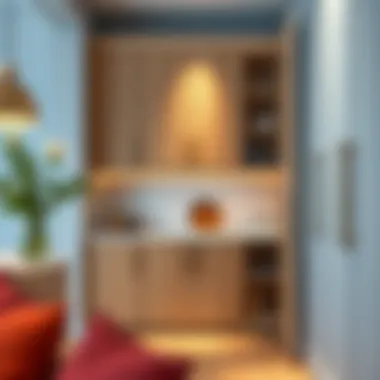
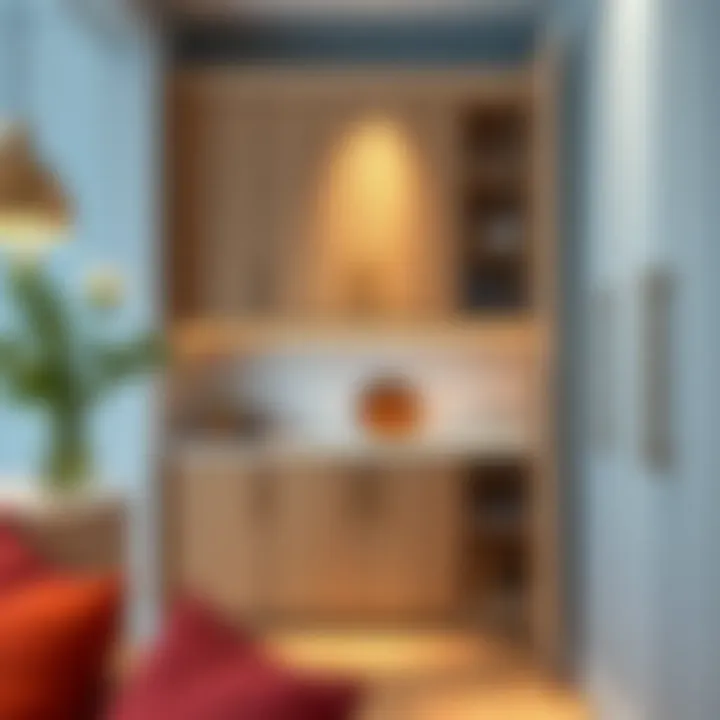
However, the main point to consider is the risk of rust and corrosion. Metal cabinets often require a powder-coated finish to prevent such issues, which can add to the overall cost. Moreover, the cold sheen of metal may not resonate with every homeowner’s aesthetic preference.
Plastic
Plastic is often underestimated but can serve as a fantastic alternative for kitchen and home office cabinets. Its resilience against moisture, ease of cleaning, and lightweight attributes make it particularly suitable for various environments. One of the most significant advantages is its affordability. If DIY is your game, plastic could be well within reach, allowing for personal projects without breaking the bank.
Yet, blatant drawbacks should be considered. Plastic can present a rather cheap appearance, especially when compared to wood or metal, and may not provide the same level of durability under heavy loads. Extended exposure to sunlight can lead to fading, which could dull attractive colors and patterns over time.
Glass
Glass cabinets operate as a tool for openness, offering a visual connection between spaces while reflecting light in exquisite ways. They allow homeowners to display their prized possessions while keeping dust at bay. The transparency can create an illusion of more space and contribute to airy atmospheres within tight areas.
Nonetheless, glass cabinets aren’t without their cons. They can require regular cleaning to maintain clarity and reveal their cleanliness, and if not properly reinforced, they may pose a danger. Additionally, glass can break when subjected to impact, making it less suitable for high-traffic areas or homes with rambunctious children.
"Choosing the right materials for deep cabinets is not just about preference; it’s about balancing aesthetics, function, and sustainability."
In summary, various materials, be it wood or metal, present unique properties that cater to diverse applications and tastes. Understanding these materials in depth can lead to more informed decisions, allowing homeowners to tailor their selections to better fit their style and practical needs.
Deep Cabinets in Various Settings
When we talk about deep cabinets, their versatility becomes immediately apparent across diverse areas of a home. From kitchens to living rooms to home offices, the role deep cabinets play in organizing and enhancing functionality can't be overemphasized. Not only do they provide practical storage solutions, but they also enrich the overall aesthetic of spaces, seamlessly blending utility with style.
Kitchen Applications
The kitchen is often renowned as the heart of the home. Within this realm, deep cabinets shine particularly bright.
Pantry Solutions
In the context of pantry solutions, deep cabinets offer a way to maximize the often-limited space available. A standout feature of pantry solutions is their capacity to store bulk items, canned goods, and even small appliances without cluttering countertops. The key characteristic here is the significant storage depth they provide, allowing homeowners to store large quantities and various sizes of items, which is a beneficial trait for anyone who loves to cook or entertain.
Despite their obvious utility, there are a few things to consider. A common downside is visibility; deeper cabinets may require thoughtful organization to prevent items from becoming lost or forgotten in the back, which could lead to wasted food and resources. Organizers and pull-out shelves can help here, making ease of access a priority—something to ponder when designing a pantry.
Appliance Garages
Now think about appliance garages, another clever application of deep cabinets in kitchens. These cabinets serve the purpose of concealing appliances like toasters, microwaves, and blenders, giving your kitchen a clean look. What sets appliance garages apart is their ability to hide daily-use items while keeping them easily accessible. This is particularly beneficial in open-concept homes where aesthetic coherence is key.
However, it’s crucial to take measurement into account when designing an appliance garage. If it’s too small, you may end up cramming devices in there, defeating the purpose. Hence, having clearance and sufficient depth to comfortably house appliances while allowing their doors to swing open is vital for functionality.
Living Room Utilization
Moving into the living room, deep cabinets continue to demonstrate their value.
Entertainment Centers
In terms of entertainment centers, deep cabinets play a pivotal role in accommodating all the modern gadgets we own today. Whether it’s game consoles, Blu-ray players, or the occasional stack of DVDs, the deep storage ensures everything is tucked away but still within reach. One key characteristic of these cabinets is their design flexibility; they can be customized to fit different styles from minimalist to rustic, making them a popular choice for living room designs.
On the flip side, while they can house numerous items, a cluttered entertainment center can detract from the living space’s aesthetic, so it’s crucial to maintain balance. Regularly assessing how many items you keep in this area can help keep it from becoming a jumbled mess.
Display Cabinets
Lastly, we come to display cabinets, which serve a dual purpose: storage and showcasing cherished items. The unique aspect of display cabinets lies in their ability to create a focal point within a room. With strategic lighting and glass doors, they can enhance the beauty of collectibles or family heirlooms.
However, the downside is the need for regular cleaning and arrangement—dirt and dust can accumulate on display items if they're not maintained. Moreover, if a display cabinet becomes overcrowded, it can lead to a cluttered aesthetic rather than a polished presentation. Being selective about what to display can improve both organization and appearance considerably.
Home Office Functionality
The home office is where deep cabinets can transform a workspace into a sanctuary of organization and efficiency.
Storage for Supplies
When it comes to storage for supplies, deep cabinets come into play as lifesavers in keeping everything from paper clips to printer paper orderly. Their depth allows ample room for diverse supplies, a major advantage for productivity. Homeowners can categorize all supplies easily and make access quicker when deep cabinets are used thoughtfully.
On the downside, it can become complicated if deep cabinets are poorly organized. It’s advisable to incorporate bins or drawers within these cabinets to help maintain order and clarity in what’s stored inside, thus enhancing the efficiency of your workflow.
Files and Documents Organization
Lastly, consider the significance of files and documents organization. Deep cabinets designed with ample space for hanging files can take a world of clutter off your desk. Their primary characteristic is their capacity to house critical documents while remaining discreet. This organization ensures that important files are easily retrievable without crowding work surfaces.
The only drawback might be limited accessibility if the cabinet is too deep. Homeowners should ensure that frequently accessed files are positioned near the front to avoid the hassle of digging through the depths for items needed regularly.
Impact on Interior Design
Deep cabinets are often more than just storage solutions; they are pivotal in shaping the aesthetic and functional qualities of interior spaces. Their importance cannot be overstated, especially as they serve a dual purpose: maximizing storage while adding character to a room. With the right design choices, deep cabinets can transform a mundane area into a sophisticated and inviting environment.
Color and Finish Choices
When selecting deep cabinets, the color and finish can dramatically influence the room's overall atmosphere. Whether you lean towards a sleek, modern look or prefer the warmth of a traditional finish, the myriad of options allows for tailored expression.
- Neutral Palettes: Shades of white, gray, or beige tend to offer versatility and can create a cohesive look with various interior styles.
- Bold Colors: Opting for deep greens, navy blues, or rich burgundies can inject a sense of drama and sophistication.
- Textured Finishes: Adding a distressed look or a matte finish can evoke a rustic charm or a contemporary edge.
It’s essential to think about the existing color scheme in the space. Matching or contrasting your cabinetry with wall colors or countertops can establish a visual dialogue that is pleasing to the eye.
Some folks believe that choosing the cabinet finish is as crucial as the furniture itself. Think about it this way: a cabinet painted in a glossy finish reflects light and gives the impression of a more spacious area, while matte finishes absorb light, creating a cozier feel. The finish can also impact maintenance. Glossy finishes are typically easier to wipe clean but might show fingerprints more readily, unlike textured surfaces that can hide imperfections.
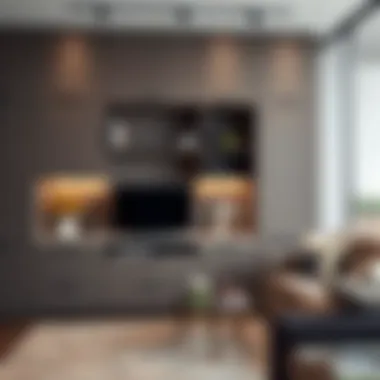

Creating Visual Balance
Visual balance is crucial when designing with deep cabinets. A well-designed room considers the weight and proportion of furnishings. Deep cabinets provide a solid anchor that can help balance lighter furniture.
- Symmetry: Placing two matching deep cabinets on either side of a fireplace or window can create a pleasing equilibrium. This setup can also guide the eye across the room, enhancing flow.
- Layering: Incorporating varying heights—perhaps a tall deep cabinet beside a lower unit—creates depth and interest. This gives your space a layered perspective, making it more inviting and dynamic.
- Accent Features: Introducing contrasting elements, such as open shelving or decorative artwork on top of deep cabinets, can draw attention and prevent the space from feeling heavy.
It's also wise to consider the overall theme of your home. A clean, industrial space might favor steel handling and dark wood, while a cozy, farmhouse-style area might benefit from light woods and softer colors. When everything aligns well, deep cabinets can thrive as the heroes of your interior design, bringing together functionality and style.
"A well-balanced space can evoke feelings of peace and harmony, where every piece, including deep cabinets, has its rightful place."
Culmination
Deep cabinets have a significant impact on interior design. By carefully considering color choices, finishes, and how they play into visual balance, homeowners and designers alike can craft spaces that are both functional and aesthetically pleasing. In many homes, the cabinet designs might very well be the anchors that hold together various decorative elements, enhancing the overall cohesion of an interior.
DIY and Customization Options
Embarking on a DIY journey for deep cabinets is more than just a creative outlet; it's a personal endeavor that can dramatically shape your living space. By opting for do-it-yourself and customization options, homeowners gain the latitude to tailor their cabinets to both functional needs and aesthetic tastes. This approach not only allows for personal expression but also can be a more cost-effective solution compared to ready-made products. Understanding how to build deep cabinets and personalize them effectively can make all the difference in achieving that perfect blend of utility and style in your home.
Building Your Own Deep Cabinets
Creating your own deep cabinets might sound like a Herculean task, but it’s very much within reach for those willing to roll up their sleeves. Start by determining the dimensions that best fit your space and your storage needs. Consider drawing up plans that incorporate thoughtful features like shelves and pull-out compartments. Selecting the right materials is crucial; opting for plywood can be both sturdy and affordable, while solid hardwood offers that increased durability and aesthetic appeal.
Not only does constructing your own cabinets offer a sense of accomplishment, but it also presents the perk of determining every little detail, from the depth of the shelves to the finish of the wood. Of course, it requires time and effort, but for many, the satisfaction derived from crafting functional art for their homes is worth it.
Personalization Techniques
Hardware Selection
When it comes to bringing your deep cabinets to life, hardware selection plays a pivotal role. Choosing the right knobs or handles is not just about function; it’s also an opportunity to imbue your cabinets with your personal flair. Whether you choose sleek, modern metal handles or rustic wooden knobs, this choice significantly contributes to the overall aesthetic of your cabinets.
The key characteristic of quality hardware is durability—opt for materials like stainless steel or solid brass, which often offer longevity and resistance to wear. A unique feature of well-chosen hardware is its ability to tie various elements of a room together, making it a popular choice among designers and DIY enthusiasts alike. The downside, however, is that high-end hardware can lead to escalated costs if not budgeted properly, but the investment often pays off in style and functionality.
Finish Techniques
Finish techniques allow you to add that finishing touch to your cabinets, elevating them further into the realm of personal expression. The choices range from stain options that emphasize the natural grain of the wood to vivid paints that can transform any cabinet’s look entirely. Techniques such as distressing or glazing can also enhance the antique charm of a cabinet design, making it stand out in a contemporary or traditional setting.
One significant advantage of a good finish is how it can protect the underlying material from wear and tear, thus prolonging the cabinet's life. A drawback might be the skill required to apply certain finishes effectively; mistakes can lead to unsatisfactory results and possibly necessitate rework. Nevertheless, the ability to choose and apply a finish that resonates with your style adds a one-of-a-kind essence to your deep cabinets.
Crafting your own cabinets gives you total control over the design, offering a blend of functionality and personal touch that store-bought solutions often lack.
By understanding these DIY and customization options, homeowners and designers alike can make empowered choices in creating deep cabinets that are not just useful, but resonantly personal.
Trends in Deep Cabinet Design
The world of deep cabinet design is ever-evolving, reflecting not just changing aesthetic preferences but also shifting lifestyle needs and environmental considerations. Homeowners and designers alike need to stay attuned to these trends. They inform choices that blend practicality with style, while also addressing the complexities of modern living.
Sustainability and Eco-Friendly Options
As more people grow aware of their environmental footprint, the demand for sustainable and eco-friendly cabinet designs has significantly increased. This trend isn’t just a fad; it’s a movement toward conscious living.
Using materials that are either recyclable or sustainably sourced has become a priority. For instance, bamboo is gaining popularity, not only for its durability but also for how rapidly it grows compared to traditional hardwoods. This aligns with the eco-conscious ethos many individuals aspire to.
"Go green with cabinetry that speaks to both your style and values."
Additionally, proper finishes that are low in volatile organic compounds (VOCs) are preferred. These finishes lessen the impact on indoor air quality, which is especially important in home spaces where families gather. Thus, opting for cabinets that have been treated with these eco-safe products can be a step towards healthier home environments.
Technological Integration
The integration of technology into deep cabinet designs represents a significant shift. It enhances both user experience and functionality, appealing particularly to those who appreciate convenience.
Smart Cabinets
Smart cabinets are at the forefront of this technological wave. Imagine cabinets that can notify you when supplies are running low or have built-in sensors to optimize space and storage. These high-tech solutions not only streamline your daily tasks but also add a futuristic flair to traditional designs.
One key characteristic of smart cabinets is their connectivity options. They can often sync with home automation systems, allowing for effortless integration into the overall smart home ecosystem. This makes them a popular choice for tech-savvy homeowners who want to stay ahead of the curve.
However, it's crucial to consider that while smart cabinets offer numerous benefits, they may come with challenges. The complexity of technology may deter some users, and issues like software malfunctions could pose inconveniences. It’s essential to weigh these pros and cons before making the leap into smart cabinet functionality.
Integrated Lighting
Alongside smart technology, integrated lighting has become a favored feature within deep cabinets. This design trend allows homeowners to illuminate their spaces effectively and aesthetically. Integrated lighting serves as more than just a practical solution for visibility; it enhances the overall ambiance of a room.
A key characteristic of this lighting trend is its ability to highlight cabinet contents without having to pull everything out. It's favorable for both design and utility, making deep cabinets not only easier to use but visually appealing as well. Thoughtfully placed LEDs can create a sophisticated atmosphere, particularly in kitchens or living spaces where deep cabinets are focal points.
On the downside, integrated lighting may require attention to installation and maintenance. Homeowners should consider the initial costs and potential for bulb replacements. However, the benefits of having an inviting and organized in-cabinet experience often outweigh these concerns.
In summary, the trends in deep cabinet design reflect a broader shift towards sustainability, technological integration, and user experience. Homeowners, designers, and DIY enthusiasts must remain informed about these movements to make choices that align with both their aesthetic desires and modern living needs. In this way, deep cabinets can transcend their traditional roles, evolving into essential elements that enhance the overall integrity of home design.
Epilogue
Deep cabinets hold a paramount place in contemporary interior design, weaving together functionality, style, and practicality. Their significance extends beyond mere aesthetics; they serve as essential storage solutions, transforming chaotic spaces into organized havens.
Next, the aesthetic appeal of deep cabinets plays a crucial role in defining interior spaces. By selecting appropriate materials and finishes, homeowners can personalize their living spaces. For example, the choice between solid wood and engineered materials can dramatically change the cabinet's look and feel. When combined with thoughtfully chosen hardware, the cabinets can be both functional and visually striking.
"Deep cabinets are not just storage; they are design elements that tell a story about the space they inhabit."
Moreover, the trends highlighted in the article, like sustainability and technology integration, reflect a growing awareness among homeowners and designers alike. Modern consumers are increasingly looking for eco-friendly options that do not compromise on style. For instance, selecting cabinets made from recycled or sustainably sourced materials can contribute to a greener planet while maintaining the desired look of one's home.
As consumers navigate through the myriad options available, customization stands out as a critical consideration. The potential to personalize deep cabinets facilitates the creation of unique storage solutions that cater to individual needs. By incorporating elements like pull-out drawers or adjustable shelves, users can tailor their cabinets to maximize both space and accessibility.
In essence, the journey through deep cabinet designs illustrates their multifaceted advantages. They are not merely functional boxes sitting against a wall; they are essential pieces of furniture capable of transforming a room's design narrative. By emphasizing utility and beauty, deep cabinets can significantly enhance the overall experience of any living space.








